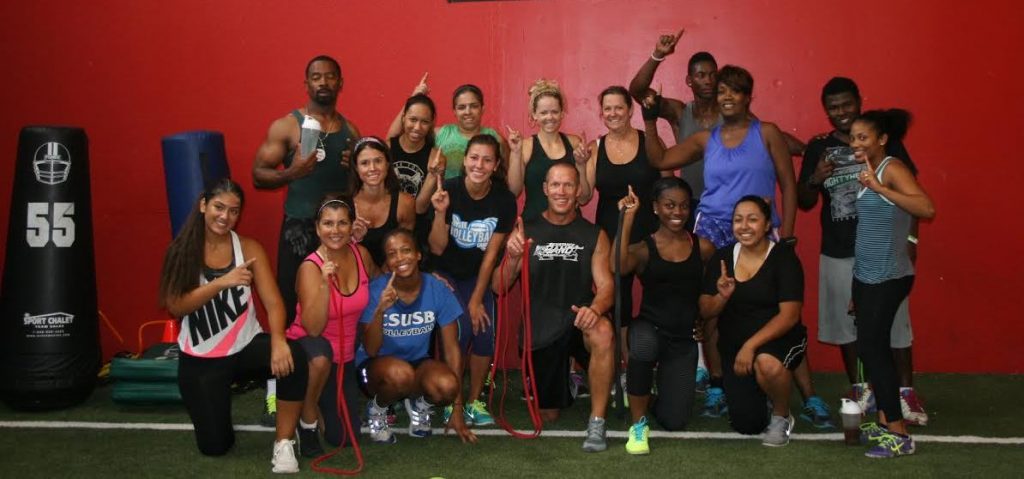Traditional Ab Training
For years I did the traditional ab training exercises. You know what I mean…Crunches, Sit-ups, Leg Raises, Russian Twists and even those goofy cable pull downs. All wathe stuff you see in the magazines.

My abs never really improved and it wasn’t for a lack of effort because I worked really hard and long on my abs. However, as a young Physical Therapist I started noticing that all of these same exercises were causing my patients back stiffness or even pain.
That made me start to think about how the abs worked and I determined there were a few problems with these so called ab exercises…
- They were training the abs to be a mover not a stabilizer
- They were only training in a single plane vs. multiple planes
- They did not get the arms and legs involved which was how the abs got turned on
Ab Training Issues
Abs are Stabilizers not Movers
The #1 role of the abs is to stabilize the low back to prevent excessive movement within the segments of the spine that could cause injury to facet joints (joints that hook segments together in the spine), the cartilage disc that separates segments of the spine or small nerve roots that exist out of the spine.
The spinal segments are anatomically aligned in such a way that they provide very small amounts of movement between segments which is good because they are set up to be very stable joints designed to protect the important structures of the spine noted above.
However, most individuals and trainers, train them to be movers which ultimately places these important structures of the spine at risk while neuro-muscularly training the abs to be something they are not wired up to be.
Ab Muscles are Multi-plane Muscles
There are 4 key ab muscles (Rectus Oblique, Internal Obliques, External Obliques and Transverse Abdominus). Each of these muscle have a primary fiber alignment.
- RO – Primarily Vertical
- IO and EO – Primarily Diagonal
- TA – Primary Sideways
As a result, to effectively train these muscles it will require doing more than vertically dominated sit-ups, crunches and leg raises which hit 25% of the actual ab muscles.
Why Legs and Arms Need to be Involved
The abs are the only connecting link between your upper and lower body. As a result, the arms and legs need to be involved in Ab Training to make sure the abs are being attacked from both the top and the bottom. If this does not occur, what happens is you will develop imbalances and inflexibility in muscles connecting the arms and legs to the trunk. Ultimately these imbalances and restrictions lead to low back, shoulder and hip related injures.
3 Ways to Make Ab Training Better
1. Start rotating
I know for most they think twisting while sitting on your butt when I say rotation but that is not what I mean. What I’m referring to is looking at incorporating rotational pulling, pushing, reaching and lunging into your workouts. This will drive the abs to stabilize against gradually stronger forces as the upper and lower body muscles develop greater strength.
2. Start using horizontal vectors
If all you do is train with free weights, you are not training with horizontal vectors unless you are lying down which is taking your lower body out of play. Resistance bands or cable columns are the only way to train with horizontal vectors. Since cable systems are difficult to transport, I highly recommend looking at bringing resistance band horizontal vector training into your workouts.
Bands will allow you to perform numerous horizontal vector exercises using multiple planes of movement. They will do this while challenging the abs to become better stabilizers or decelerators of rotation, lateral flexion and extension which is exactly what they are designed to do.
3. Start moving like an animal
I know this may sound a bit crazy but placing your body on all 4’s or doing simple crawling type movements will challenge the abs to work as stabilizers in multiple planes while taking advantage of ground reaction using multiple bases of support through your arms and legs. This type of training can only be done using flat continuously looped band resistance due to their light weight pliability and their ability to attach directly onto the body.
Ab Training success will be dramatically impacted by how well the hips and shoulders move and how well the abs dynamically stabilize. Not the other way around. 😉
Summary
All Ab Training should start with simple isometric stabilization training using exercises like plank or pillars. However, I would highly recommend you start implementing these 3 ab training recommendations into your regular exercise programs and I am very confident you will start seeing instant improvement not only with your ab development but also in your overall total body strength.
Want to Get 6-pack Abs?
Click Image to Learn More




